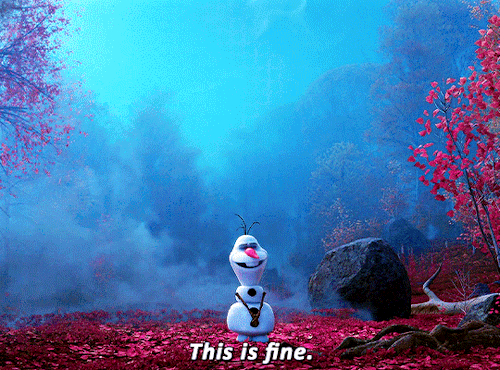With all the wavering emotions we are facing in these uncertain times, my family has tried to find small ways to spread joy to others each day. Focusing on others' feelings has allowed us to maintain our sense of optimism and positivity. Maintaining our sense of community is empowering and has given our days a sense of purpose.
Still, human connection is everything. While air hugging and messages from afar will have to suffice, we cannot allow ourselves to recluse into isolation and shut out the light that still shines in our world. Mental health is so important, and caring for the emotional well-being of others is what will allow us to get through.
What weighs on my heart the most is the emotional well-being of my students. Teaching three classes of high school seniors has me heartbroken at the losses that they are feeling and experiencing now. While we can tell them that the best is yet to come, currently, these milestones were ones they had been dreaming about and working toward their whole lives. This period marks the end of their childhood and will define them. I do believe that my students will create good from this situation and will be set on paths to change the world in incredible ways. I believe they will amplify their voices and use their stories to positively impact others, but still, there is a great sense of loss and grief being felt now.
During our adventures yesterday, my sweet Harper's first instinct was to run toward one of my former students and give him a bear hug. She has spent her entire life around the speech kids, who are extended family members to us. We all called out and swooped in to stop her from breaking the invisible barrier that will keep us all healthy and subdue the spread of this virus. At that moment, all we could do was cry at the sweetness of this small child and the sadness that we all felt with the uncertainty that surrounds us. Tears welled in our eyes as we were unable to greet one of our favorite families in the manner that we are so accustomed to doing so. She exemplified in one action a sense of innocence and love that we all still have for each other and cannot forget. No matter the physical or imaginary bars placed between us, we cannot forget to reach beyond them emotionally.
Which leads me to wonder what this new educational landscape will look like moving forward. How will we stay connected with our students as the March 31st return date approaches? What is the best approach to preserve and forge meaningful connections with them?
As we march into uncharted territory, it is okay for us to release our typical classroom expectations. Instead of focusing on standards and covering curriculum maps, we need first to prioritize the social and emotional well-being of our students and ourselves. As I begin to relook at my lesson plan doc and make recommendations to colleagues about how to proceed, here are my tips for embracing this new normal in eLearning.
1. First and foremost, keep lesson plans simple.
Students are not used to remote learning. While they have used educational technology and are familiar with the use of their devices, they are not used to learning alone. They will need guidance and support in locating materials, processing instructions, and submitting assignments. As such, lesson plans and instructions should be clear, simple, and straightforward. Focus on what you want students to learn, how they will practice it, and how they will prove they learned it. Keep students on one platform or webtool at a time. Avoid having them jump from webtool to webtool in a single lesson, and utilize the learning management system as much as possible to make material accessible. Less in this case truly is more.
2. Use the technology that you are most comfortable with or have used before.
As we are not able to see our students in person, teachers are feeling pressure to recreate the typical face-to-face experience with webtools. Remember, learning a new webtool can take time and can be stressful for both the teacher and the students involved. Stick to tools that you feel most confident using because that is where you will find the most success. If you want to sprinkle in a Google Hangouts Meet or Flipgrid to connect with students in a visual way, great, but don’t feel the pressure to become an eLearning master overnight.
3. Allow yourself room to fail.
Some lessons may flop. The technology could fail, and students could disengage. It is okay if an activity doesn’t work, and it is okay to abandon one activity in place of another one that may garner more success. Being honest with students about a lack of familiarity with eLearning shows that you are embracing failure and that everyone can learn together. Students will feel more comfortable and confident in engaging in this new learning environment when there is room for failure.
Because now is the time to embrace the unknown, if you are daring, try something new. Several ed-tech companies are hosting webinars, posting resources, and opening up the premium versions to help support teachers and students. My favorite professional development experiences have been offered by Pear Deck, who is hosting live webinars for teachers new to this awesome Google Slides add-on. I am also a fan of Screencastify’s master class that provides short, targeted videos to support teachers in using their tool to engage with students. An all-time favorite resource for professional development is provided by EdPuzzle, who has several courses on a variety of topics - beyond just their webtool. Taking advantage of these resources can help now and also help expand a teacher’s tool belt when we return to a sense of normalcy in the coming school years.
5. Focus on relationships.
Reconnecting with students after nearly two weeks apart will be challenging. Some students may not have access to a strong internet connection, may now be watching siblings, or maybe experiencing varying emotions that are preventing them from connecting. Finding ways to foster the strong relationships that you have with students is the best way to keep them engaged. Once they are engaging and connected to their teachers, they will begin to interact with the lessons and activities that we are posting. The relationship piece has to come first and has to remain the priority.
This period of time will be recorded in the history e-books of the future. Political and medical institutions will undergo reforms because of this pandemic, and our first responders and service workers will be remembered as the heroes they are. As such, we need to shift our mindset and adapt to our current reality. We will get through this, and we will all continue to do the best that we can. As educators, our love for our students is often as deep as for our own families. Start there, and the rest will follow.
Stay active. Stay connected. Stay healthy, friends.




